A standard 1994 Kennedy half dollar from Philadelphia (P), Denver (D), or San Francisco (S) mints is worth face value when circulated. Uncirculated versions range from a few dollars to hundreds for high-grade examples. The 1994-P and 1994-D are worth similar amounts in mint state, while 1994-S silver proofs can fetch $35-$40. Though no major errors are documented for 1994, collectors should look for common minting variations like die breaks, doubled dies, or off-center strikes that can add value depending on severity.
Most 1994 Kennedy half dollars sit in jars collecting dust at face value, but certain varieties from this year can fetch significantly more. The key lies in understanding mint marks, condition grades, and spotting potential minting errors that transform an ordinary fifty-cent piece into a collectible worth ten to twenty times its face value—or more for exceptional specimens.
Understanding the 1994 Kennedy Half Dollar Production
The United States Mint produced Kennedy half dollars at three facilities in 1994, each leaving a distinctive mark on the coins. Philadelphia (no mint mark or “P”), Denver (“D”), and San Francisco (“S”) collectively struck millions of these coins, though not all were intended for general circulation.
Regular business strikes came from Philadelphia and Denver mints, entering circulation through banks and commerce. San Francisco specialized exclusively in proof coins for collectors, crafting them with specially polished dies and planchets to create mirror-like surfaces and frosted design elements. This fundamental difference in production purpose directly impacts value today.
The Philadelphia mint struck approximately 23,628,000 half dollars in 1994, while Denver produced around 23,828,110 pieces. San Francisco’s proof production numbers were significantly lower, creating inherently scarcer coins from the start.
Current Market Values by Mint Mark and Grade
Philadelphia Mint (No Mint Mark or “P”)
Circulated 1994-P half dollars remain at face value—fifty cents. The real value emerges in uncirculated conditions:
| Grade | Approximate Value |
|---|---|
| MS-60 | $2.50 – $3.50 |
| MS-63 | $4.00 – $6.00 |
| MS-65 | $12.00 – $18.00 |
| MS-67 | $45.00 – $75.00 |
| MS-68 and higher | $150.00+ |
A truly exceptional MS-68 specimen sold through Heritage Auctions in 2022 for $186, demonstrating the premium collectors pay for coins with virtually flawless surfaces and strong, well-defined strikes.
Denver Mint (“D”)
The Denver production shows similar value patterns to Philadelphia:
| Grade | Approximate Value |
|---|---|
| MS-60 | $2.50 – $3.50 |
| MS-63 | $4.00 – $6.50 |
| MS-65 | $13.00 – $19.00 |
| MS-67 | $50.00 – $80.00 |
| MS-68+ | $175.00+ |
Denver strikes occasionally exhibit slightly sharper detail on Kennedy’s hair and the eagle’s feathers, making premium-grade examples particularly desirable. The “D” mint mark appears on the obverse, just below Kennedy’s neckline.
San Francisco Mint (“S”) – Proof Coins
San Francisco produced two distinct varieties in 1994:
Standard Clad Proof:
- PR-65: $8.00 – $12.00
- PR-67: $15.00 – $22.00
- PR-69: $28.00 – $35.00
Silver Proof (90% silver composition):
- PR-65: $22.00 – $28.00
- PR-67: $32.00 – $42.00
- PR-69: $45.00 – $65.00
- PR-70 (Perfect): $125.00 – $200.00
The silver proof version contains 0.3617 troy ounces of actual silver content, giving it inherent metal value beyond its numismatic worth. A PR-70 Deep Cameo silver proof from the 1994 Prestige Set sold for $214 at Stack’s Bowers in January 2024.
Documented Errors and Varieties Worth Finding
While 1994 lacks the dramatic major error varieties found in some years, several minting anomalies exist that significantly boost value.
Off-Center Strikes
These occur when the planchet (blank coin) isn’t properly positioned between the dies during striking. An off-center strike showing 10-15% misalignment with full date visible typically brings $35 to $75. More dramatic examples with 25-40% displacement can reach $125 to $250, particularly if the date and mint mark remain fully visible.
A 1994-D half dollar struck 35% off-center sold for $178 through Great Collections in 2023, demonstrating strong collector demand for these visually striking errors.
Die Breaks and Cuds
Die breaks occur when a piece of the hardened steel die cracks or chips away, creating raised metal areas on struck coins. Small die cracks add modest premiums of $5 to $15, while larger “cuds” (rim-to-rim breaks) can bring $40 to $150 depending on size and location.
A 1994-P half dollar with a major cud covering approximately 20% of the reverse sold for $94 in 2023. The most valuable cuds occur on the obverse affecting Kennedy’s portrait.
Doubled Die Varieties
Doubled dies result from die manufacturing errors that create doubling on design elements. While no major doubled die varieties have been officially recognized for 1994 Kennedy half dollars, minor doubling occasionally appears on lettering or date digits.
Examine “LIBERTY,” “IN GOD WE TRUST,” and the date numbers under magnification. Clear doubling visible to the naked eye on these elements can add $15 to $45 to a coin’s value, while dramatic doubling authenticated by major grading services commands significantly more.
Wrong Planchet Errors
Extremely rare but documented, these occur when a half dollar die strikes a planchet intended for a different denomination. A 1994 Kennedy half dollar struck on a quarter planchet would be a significant error worth $500 or more, though finding such errors requires exceptional luck.
Struck Through Errors
When foreign material (grease, cloth fragments, or debris) sits between the die and planchet during striking, it creates “struck through” errors. These appear as smooth, unstruck areas on the coin’s surface. Depending on size and visibility, values range from $10 for minor examples to $75+ for dramatic cases.
How to Identify Your 1994 Half Dollar’s True Value
Start by determining the mint mark location on the obverse (front), below Kennedy’s truncated neck. No mint mark or a “P” indicates Philadelphia, “D” means Denver, and “S” identifies San Francisco proofs.
Assess the coin’s condition honestly. Circulated coins show wear on high points—Kennedy’s cheekbone, hair details, and the eagle’s breast feathers. Any visible wear drops the coin to circulated grades worth face value for business strikes.
Uncirculated coins display no wear under magnification. Look for original mint luster—the satiny or frosty surface texture from the striking process. Contact marks (small nicks or scratches) are acceptable on lower mint state grades but become increasingly problematic as grade increases.
For potentially valuable specimens grading MS-67 or higher, or suspected errors, professional authentication through PCGS (Professional Coin Grading Service) or NGC (Numismatic Guaranty Company) costs $20 to $40 but provides definitive grading and significantly improves marketability.
Maximizing Return When Selling 1994 Half Dollars
For common circulated examples, spending them or depositing at banks makes the most sense. The small premiums on lower mint state grades (MS-60 to MS-63) often don’t justify selling fees unless you have multiple pieces.
High-grade uncirculated specimens (MS-65+) and all proof varieties sell best through specialized coin dealers, online auction platforms like eBay or Heritage Auctions, or direct sales to collectors through forums like CoinTalk. Expect dealers to offer 60-75% of retail value for immediate purchase, while private sales and auctions typically yield 75-90% of guide prices but require more time and effort.
Error coins attract the most interest when photographed clearly showing the error, with authentication from recognized grading services for significant examples. Collector demand for documented errors remains strong, often exceeding price guide estimates when multiple bidders compete.
Building Your Collection Strategy Around 1994 Half Dollars
Rather than seeking expensive graded examples, new collectors can build complete 1994 sets affordably. Acquiring uncirculated examples of P, D, and both S proof varieties costs $50 to $100 total, creating a satisfying mini-collection representing all three mints.
Focus searching efforts on bank rolls and circulation finds for potential errors rather than purchasing raw coins at premium prices. The thrill of discovering an off-center strike or die break in pocket change costs nothing but time and adds genuine excitement to the hobby.
For serious collectors, targeting PR-69 and MS-67 graded examples offers the best value-to-quality ratio. These grades capture most of the visual appeal of perfect coins at 30-50% of PR-70 or MS-68+ prices, making them smart long-term holdings as population numbers remain relatively stable.
The 1994 Kennedy half dollar represents an accessible entry point into coin collecting, offering variety, error possibilities, and meaningful premiums for quality—all without requiring substantial investment. Start examining your change carefully, and that ordinary-looking fifty-cent piece might prove worth considerably more than face value.
You may be interested:
- 1859 Indian Head Penny Coin Value Complete Errors List And No Mint Mark Worth Guide For Collectors
- 1911 V Nickel Coin Value Guide Complete Errors List And No Mint Mark Worth Today
- 1902 Dime Coin Value Complete Errors List With O S And No Mint Mark Worth Guide
- 1788 Quarter Coin Value Complete Guide Errors List And D S P Mint Mark Worth Revealed
- 1776 To 1976 Bicentennial Half Dollar Coin Value Complete Errors List And What Your D S And No Mint Mark Coins Are Actually Worth
- 1990 Penny Coin Value Errors List How D S And No Mint Mark Pennies Are Worth Thousands Of Dollars

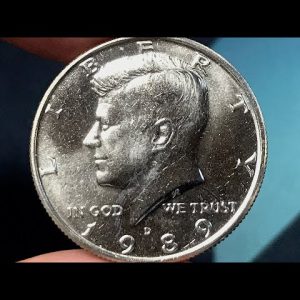
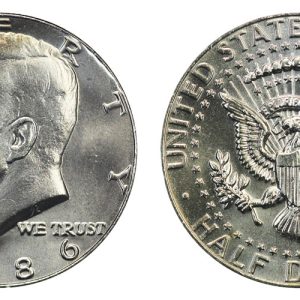
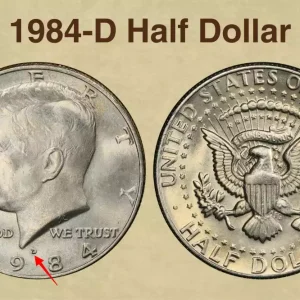
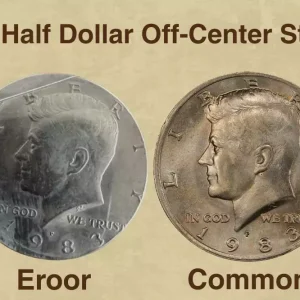
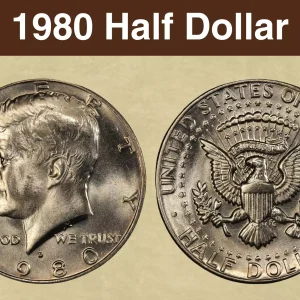
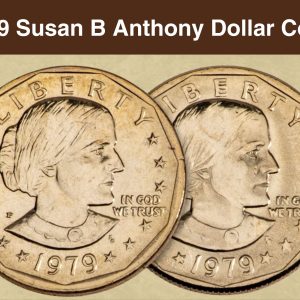
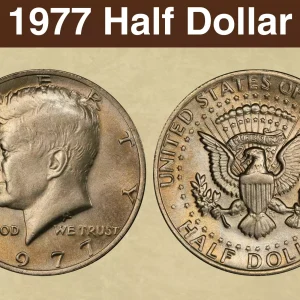
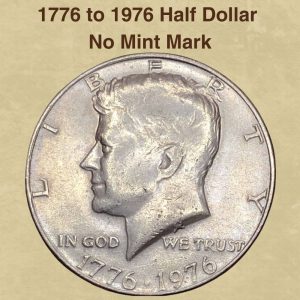
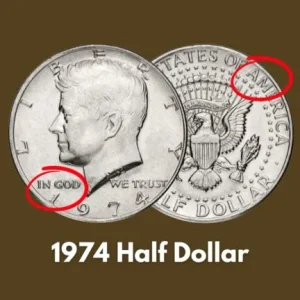
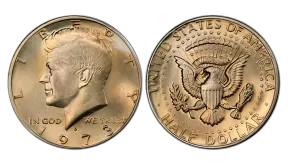
Is a 1994 half dollar worth anything?
A 1994 Kennedy half dollar’s value depends on its condition and mint mark, with circulated coins being worth around $0.55 to $0.65, while uncirculated and proof coins can be worth more. The 1994-P and 1994-D versions are common, but special proof versions, particularly those from the San Francisco Mint (1994-S), can be worth more depending on their grade.
What is the error on the 1994 D mint quarter?
This 1994-D quarter is an extremely rare find for collectors and enthusiasts alike. With a unique DDO error, this circulated coin features a 25C denomination and was minted in Denver. The coin boasts Double die errors through out the obverse that makes it even more special and valuable.
What errors to look for on Kennedy half dollars?
Look for common Kennedy half dollar errors such as doubled dies, off-center strikes, die breaks, and filled or missing mint marks. Specific rare errors include the 1964 “Accented Hair” variety, the 1971-D and 1977-D struck on 40% silver planchets, and 1968-S proof coins with an inverted mint mark. For recent coins, look for 2024 errors like the dropped star or die clashes.
Which Kennedy half dollars are worth money?
Kennedy half dollars that are worth money are generally 1964-dated coins, those with minting errors like double dies, or rare proof and Special Mint Set (SMS) versions from specific years. The highest-value coins often have special features, such as the “accented hair” variant on some 1964 examples, or a pristine grade like a PR70 or SP68. Coins minted after 1971, especially those with no mint mark, can also be valuable if they are in exceptional, uncirculated condition, notes this YouTube vi…